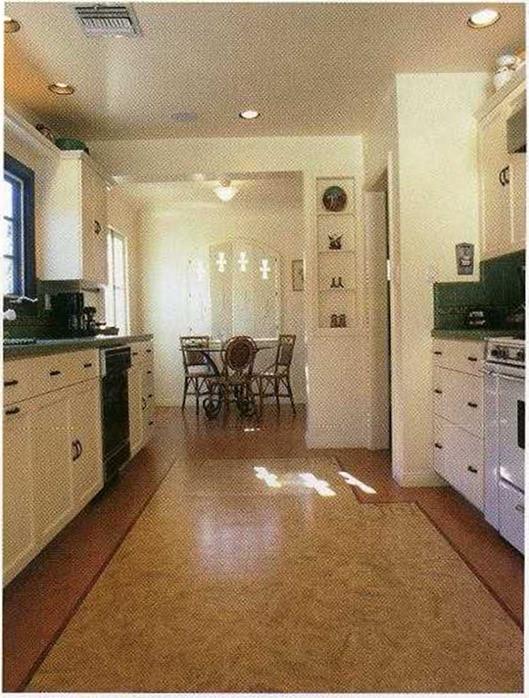Know the pros and cons of carpeting
Carpeting is not my first choice for a floor covering. In general, inexpensive carpeting doesn’t last long, so it tends to be a significant part of the waste stream clogging our landfills. Fortunately, efforts are now being made to recycle some of the millions of yards of carpeting that are replaced every year.
If you really like wall-to-wall carpeting, 1 recommend using it selectively—in bedrooms, for example. It’s not a good flooring choice in bathrooms, kitchens, and entryways. Don’t install wall-to-wall carpeting where it will get wet and be difficult to keep clean. In those situations, carpeting can collect dust and harbor dust mites and mold, becoming a potential health hazard. It’s worth it to buy good – quality carpeting that has been treated to resist staining. Avoid light colors, if possible.
Carpeting is most often purchased from a supplier and then installed by a subcontractor. Talk to your carpet subcontractor about the quality and durability of any carpet you’re considering. A tightly woven carpet with a low nap is the easiest type to clean. Find out whether your choice of carpeting and carpet padding are manufactured with low levels of volatile organic compounds (VOCs), which can adversely affect allergy-prone individuals. Low-VOC carpets, pads, and adhesives cost a bit more, but your health is on the line.
As with other types of finish flooring, carpeting should be installed only over a clean, dry substrate. When installing carpeting over a concrete slab, make sure the concrete has had a chance to cure and dry. Laying carpet on a damp slab is an invitation to mold and rot.
Vinyl floor coverings come in many designs
When 1 was growing up in my family’s prairie home, our kitchen floor was covered with a thick linoleum that was common years ago.
It had a beautiful floral pattern in bright colors—except in the high-traffic areas, where it had worn bare within six months of installation. Fortunately, today’s vinyl floor coverings are much tougher than old-fashioned linoleum, and they come in a dazzling array of colors, patterns, and designs. I usually shy away from light colors because they tend to show dirt and require more cleaning.
Vinyl works well in kitchens, bathrooms, mudrooms, dining areas, and entryways because it’s durable, waterproof, and easy to clean. Whatever you install should be able to withstand the wear and tear of a family for at least a few years. Better grades are usually worth the extra money because they last longer.
As with wall-to-wall carpeting, vinyl flooring is usually installed by a subcontractor. In most cases, an underlayment of A-n.-thick plywood or OSB is installed over the subfloor to provide a flat, firm base for the vinyl.
Make sure the adhesive the contractor uses to bond the vinyl to the underlayment has a low VOC content.
Once the vinyl flooring is in place, take care when moving the refrigerator, stove, or other heavy object across the floor. The feet on those appliances can scrape or tear a vinyl floor.
|
|







Leave a reply